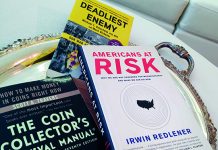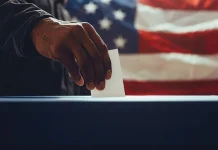
By Donn Pearlman

A reader cordially disagreed with my use of the word “curated” in the November 2018 edition of COINage. The column, headlined “Curated, Not Cleaned,” focused on collector misunderstanding about cleaning coins. It appears I may have a misunderstanding about the word curated.
The reader politely wrote that instead of curated, the word should have been conserved: “… ‘curated’ has nothing to do with the cleaning of coins … Curation is the process of assembling, management and presentation of a collection. Conservation may be related to management but is not the same as curated,” he counseled.
Debated Words
Some experts involved with the recovery and cataloging of the fabulous California Gold Rush sunken treasure recovered from the SS Central America, the legendary “Ship of Gold” that sank in 1857, have been using “curated” for 19 years to describe their process of removing ocean sediment from the thousands of historic coins retrieved from nearly a mile under the Atlantic Ocean surface. I took my vocabulary cue from them as well as hobby news media stories that also used that word. Are we wrong? I leave that to linguists, curators, and readers who think I didn’t rate with curate.
Numismatics has other examples of debated and deliberated words. Probably the most frequently heard complaint and cringe-producing reaction is when the word “penny” is used to describe one-cent denomination U.S. coins.
Technically, the United States has never minted pennies. That’s a British term. The official designation in the U.S. is cents (and also half cents that were minted from 1793 to 1857). To the average person on the street, though, they’re pennies. We have penny loafers, penny-ante poker, and a penny for your thoughts.
Former United States Mint Director Donna Pope frequently used the words penny and pennies when discussing that denomination during her 1981 to 1991 tenure. Some die-hard hobbyists protested her choice of words. However, even today, the United States Mint website states: “The penny is the United States’ one-cent coin. Every penny you’ve ever spent probably had Abraham Lincoln on it. He’s been on the front (obverse) of the penny since 1909!”
Numismatic Vernacular
Another numismatic versus everyday language difference is “bill” and “note” or “banknote.” Non-collectors will ask if you “have change for a $10 bill” rather than referring to the paper money item as a “note.” But when it is a numismatic item, that $10 bill becomes a note: National, Treasury, Demand, Federal Reserve or United States Note.
To attract new collectors, we need to recognize vernacular references to coins and paper money and respectfully educate newcomers, not harshly admonish them the first time they unknowingly do not use the “official” word.
Sometimes misplaced modifiers in numismatics create humorous images, such as the names of two hobby organizations, the Ancient Coin Collectors Guild and the Association of Dedicated Byzantine Collectors. Despite these names, one group is not composed of grizzled collectors, and members of the other club are not excessively complicated.
That’s enough for now. I need to conserve my energy to curate my thoughts.
About the Author: Donn Pearlman is a former American Numismatic Association Governor and recipient of dozens of writing and broadcasting awards.















